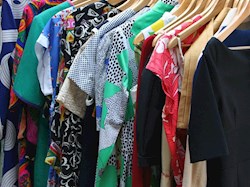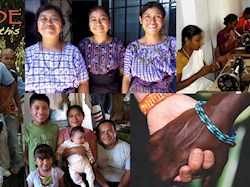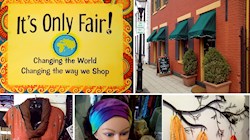Fair Trade and Environmental Sustainability: How You Can’t Have One Without The Other
April 21, 2017
Katie Bramell
Opinion
�
Slave Free Lifestyle
Protecting the environment has been a priority for fair trade certification since the push for slave-free products. The World Fair Trade Organization defines fair trade as, “a trading partnership, based on dialogue, transparency and respect that seeks greater equity in international trade. It contributes to sustainable development by offering better trading conditions to, and securing the rights of, marginalized producers and workers.”
In honor of Earth Day, let’s remember that is important to learn fair trade and environmentally conscious products have the same goal in mind: to make the world a better place.
A Brief Overview of Fair Trade in North America
Fair trade got its start with Edna Ruth Byler, a volunteer for the Mennonite Central Committee (MCC). In 1946, Byler visited an MCC sewing class in Puerto Rico where she discovered the women responsible for creating the clothing were living in extreme poverty despite their job. In order to help, Byler began taking the clothing pieces back with her to the United States where she would sell them and return the money to the women. Byler eventually was able to create a business out of the work she was doing, and in 1958 Ten Thousands Villages opened as the first fair trade shop. Today, Ten Thousand Villages is the largest fair trade retailer in North America.
In the 1980s, a group of fair trade businesses from both Canada and the United States formed an informal organization that was known as the North American Alternative Trade Organization (NAATO). NAATO would meet regularly and discuss ideas in the realm of fair trade and eventually evolved into what is today known as the Fair Trade Federation, formally incorporated in 1994. In addition to the Fair Trade Federation, in 1989 the World Fair Trade Organization was founded which served as a network for fair trade organizations worldwide.
In the late 1980s, NGO’s globally started to work on fair trade certification standards. This was a result of the price of coffee that saw a sharp decline worldwide. In 1997, European fair trade organizations created Fairtrade Labelling Organizations International (FLO), an organization that sets fair trade certification standards. Today we have several fair trade labor certification systems in North America, including Fair Trade America, Fair Trade USA, and Fair For Life.
Each fair trade organization has different requirements for businesses to become fair trade certified. It is in these requirements that many organizations list specific standards designed to protect the environment.
Fair Trade Environmental Standards in the United States
Organizations like Fair Trade USA not only work to implement fair prices for farmers, safer labor conditions and higher standards, but also invest in protecting the environment. For example, Fair Trade USA helps farmers “become better stewards of the land,” by implementing strict environmental standards to encourage farmers to help protect the ecosystem. The overall result is environmentally friendly policies that ensure safer working conditions for farmers.
Below are a few examples of what Fair Trade USA focuses on in their environmental standards:
- Soil and water
- Biodiversity and carbon emissions
- GMOs
- Agrochemicals
- Pests and Waste
Across the board, fair trade certifiers are working to reduce, reuse, reclaim and recycle materials and products whenever possible and to stop the use of toxic and harmful environmental chemicals.
Fair Trade and Earth Day
So, what does this all mean? The big picture is that fair trade organizations are working toward a safer environment for workers and protecting the environment. Focusing on the common goal that helps fair trade and environmental sustainability succeed—a healthy planet for all.
This Earth Day, we at End Slavery Now encourage you to participate in an environmentally friendly activity in your community, like planting a tree. Afterward, be sure to discuss the correlation between environmental sustainability and fair trade, and encourage your community to consider making the switch to fair trade.
After all, everyone could benefit from a better planet, right?
Topics:
Slave Free Lifestyle












